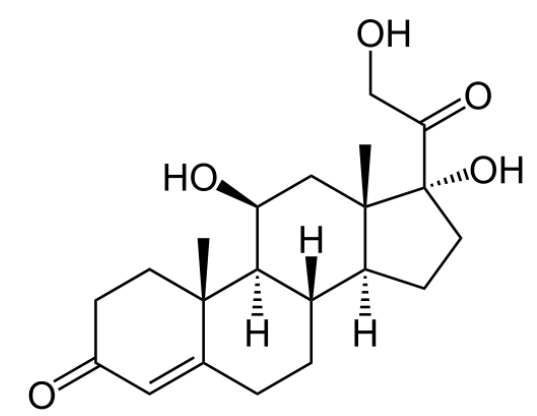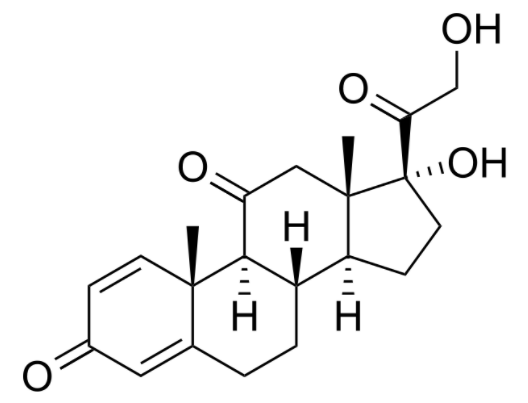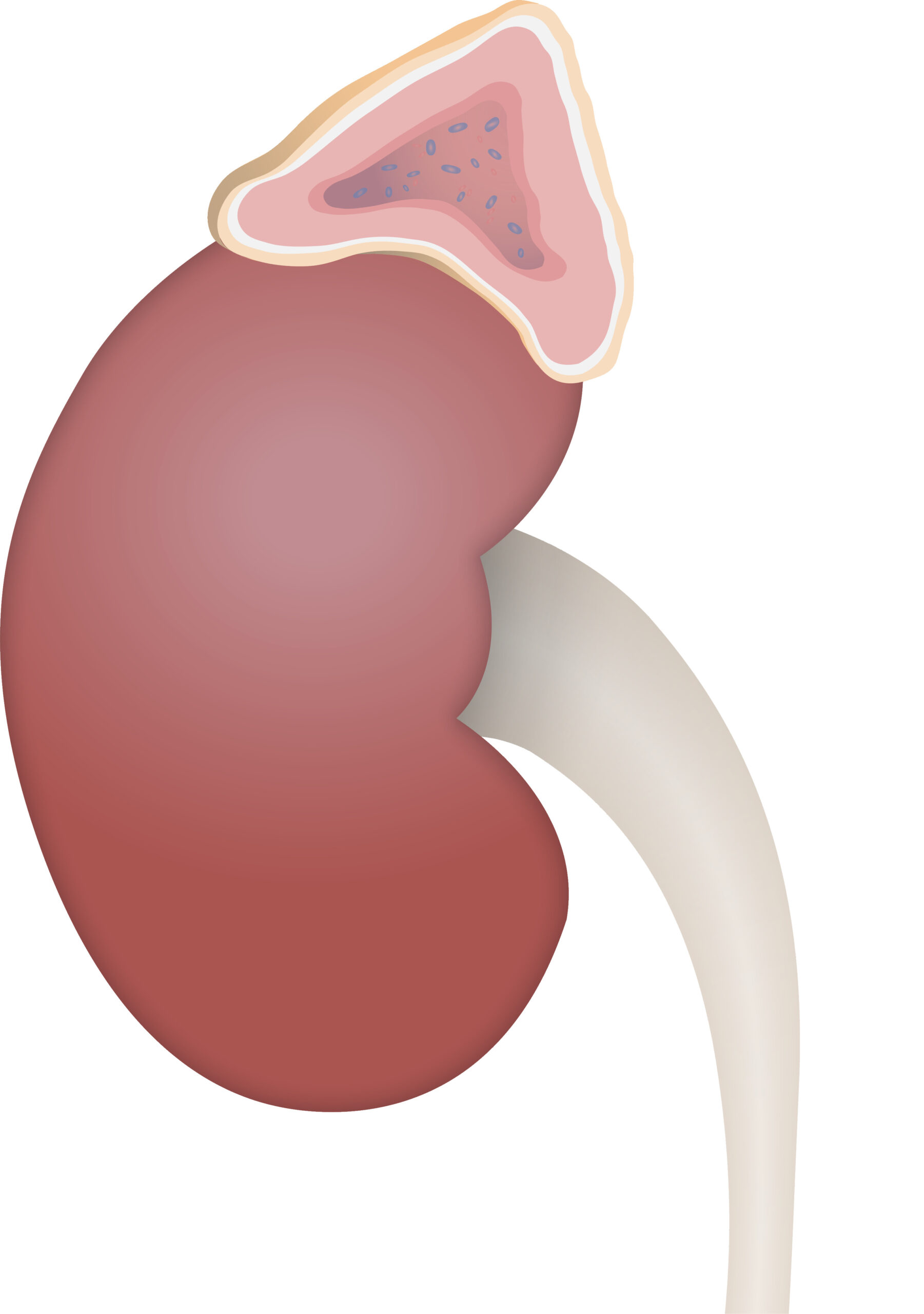Playlist
Show Playlist
Hide Playlist
Mineralocorticoids and Glucocorticoids – Adrenal Pharmacology
-
Slides AdrenalPharmacology EndocrinePharmacology.pdf
-
Download Lecture Overview
00:01 Let's move on to the zona glomerulosa and mineralocorticoid function. 00:07 Now remember that when we are talking about mineralocorticoids or even corticosteroids, we are talking about using a steroid receptor. 00:15 If you remember from your pharmacology lectures way back at the beginning, when we were looking at receptors, there are five major types of receptors. 00:24 Steroid receptors are intracellular receptors and so the drug, because it's lipophilic can cross the membrane easily and that's how the medications or the hormones work. 00:37 Now, if the steroid binds to the receptor inside the cell, it has to send a message into the nucleus. 00:45 It does so through something called an MRE or mineralocorticoid response element. 00:51 This MRE is part of the DNA molecule. 00:55 The MRE exerts its effects through DNA and you have production of certain enzymes. 01:02 Now the aldosterone agonists are part of the renin angiotensin system, and they have a very strong salt retaining activity just like androgynous mineralocorticoids. 01:12 So, aldosterone agonists are also considered mineralocorticoids as well as diuretics. 01:19 A good example of a mineralocorticoid is Florinef or fludrocortisone. 01:25 Structurally it's very similar to cortisol. 01:28 It has moderate glucocorticoid activity and very strong mineralocorticoid activity. 01:34 It is involved and can be treating cerebral salt wasting syndrome. 01:39 It can be used in Addison's disease. 01:42 It can be used in this disease called POTS or paroxysmal orthostatic tachycardia syndrome. 01:48 And it's also sometimes used in geriatric orthostatic hypotensive syncope. 01:53 So, what we're doing here is we're retaining salt so that the blood pressures are a little bit higher and it prevents the drop in blood pressure that geriatric patients have when they stand up. 02:06 Spironolactone is a diuretic. 02:10 We discussed it already in the hypertension section of pharmacology, but we also use it as its mineralocorticoid function to treat hirsutism. 02:20 It has anti-androgen and mineralocorticoid effect activity. 02:24 Let's move on to the zona fasciculata. 02:27 This is where glucocorticoid production is occuring. 02:31 Now, glucocorticoids also enter the cell as a free molecule. 02:35 It doesn't need to be converted because it's already lipophilic. 02:39 It binds to the intracellular receptor or other proteins, and then enters into the nucleus as a complex. 02:46 Now, instead of an MRE, it binds to a GRE or the glucocorticoid response element which is still also a portion of the DNA. 02:56 The GRE regulates gene expression and transcription for its various functions. 03:03 Now, when we use synthetic glucocorticoids in patients, we have side effects. 03:07 That metabolic effect can be gluconeogenesis, lipolysis and reduced subdermal fat. 03:14 Morphologic changes can have lipid deposits in certain spots such as the face, the neck, and the shoulder. 03:21 So I want to go over that just again so it's clear. 03:24 Reduced subdermal fat refers to, say the back of the skin, so people will have parchment-like skin when they are given synthetic glucocorticoids for a long time. 03:34 People who are given synthetic glucocorticoids will have more fat in the face, shoulder and neck. 03:39 So, I say that they have a 'moon face', they have a round kind of full face, but they have thin parchment-like skin. 03:49 There are some catabolic effects as well. 03:51 Protein catabolism, and tissue wasting, and osteoporotic effects are all part and parcel of glucocorticoid excess activity. 04:00 So in other words, patients who are placed on synthetic glucocorticoids can have protein wasting and reduction of muscle mass. 04:09 And osteoporosis is a major concern. 04:12 And premature bone fracture is a major concern on people who are taking synthetic glucocorticoids for a long time. 04:19 Side effects can also be immunosuppressive as well. 04:23 Cell mediated immunity can be affected by long term glucocorticoid use. 04:28 For example, lymphocyte-dependent infections can become more rampant and so you have to be very careful of patients developing severe viral infections or increased susceptability to viral infections. 04:42 Renal function can be compromised. 04:44 Remember cortisol is normally required for water excretion. 04:48 Anti-inflammatory effects,or actually, I wouldn't call it necessarily a side effect, it's actually the effect we are looking for. 04:55 There is often a dramatic suppression of multiple markers. 04:59 That's often why we use synthetic glucocorticoids in high doses in the first place. 05:04 There is some neuropsychiatric issues. 05:07 Excess cortisol causes giddiness and euphoria, and synthetic cortisol derivatives can cause that same kind of behaviour change. 05:18 The prototypical synthetic glucocorticoid is prednisone. 05:23 It has a long half life, it has quite good membrane penetration, and it's often used in acute inflammation in most disease states. 05:32 It's often a steroid replacement therapy as well for people who have adrenal suppresion. 05:38 Dexamethasone is another synthetic glucocorticoid. 05:43 It has an even longer half life than the original prednisone. 05:47 It has even better membrane penetration. 05:50 It is often used in cancer chemotherapy as part of an adjunctive treatment regimen. 05:57 Triamcinolone, beclomethasone, budesonide are other glucocorticoids. 06:02 Beclomethasone is readily penetrating the respiratory mucosa so we often use it in pulmonary inhalers. 06:11 Let's take a look at glucocorticoid synthesis inhibitors. 06:15 Now this is a drug, or a set of drugs that we use to actually reduce excess endogenous cortisol production. 06:23 Now, interestingly enough, ketoconazole, you might recognize this as antifungal medication. 06:28 We do use it in adrenal adenoma, breast cancer and prostate cancer. 06:32 And it is also used in hirsutism for the treatment of excess cortisol levels. 06:38 Metyrapone is another medication that we use in glucocoritcoid pharmacology. 06:43 It inhibits synthesis of cortisol. 06:46 We actually use it more for diagnositic testing rather than actual therapy. 06:52 Other agent blocks conversion of cholesterol to the precursors of cortisol and other endogenous steroids. 06:59 It is used in steroid producing cancers to prevent excess steroid in the body. 07:06 The zona reticularis function and adrenal androgens has been covered in another lecture, so I won't go into too much detail here.
About the Lecture
The lecture Mineralocorticoids and Glucocorticoids – Adrenal Pharmacology by Pravin Shukle, MD is from the course Endocrine Pharmacology. It contains the following chapters:
- Steroid Binding is Intracellular
- Mineralcorticoids
- Glucocorticoids
Included Quiz Questions
What is the signaling pathway for mineralocorticoids and glucocorticoids?
- These steroid hormones bind to intracellular receptors.
- These steroid hormones bind directly to an intranuclear receptor.
- These steroid hormones bind to a membrane receptor on the outside of the cell called tyrosine kinase.
- These steroid hormones bind to a transmembrane receptor on the cell called JAK-STAT.
- These steroid hormones bind to a GPCR.
What best describes the side effect profile of glucocorticoids?
- Increased gluconeogenesis and lipolysis, abnormal lipid deposition
- Decreased blood pressure, a slight drop in sodium, increased urine output
- Immune dysfunction, primarily affecting humoral immunity
- COX-2 inhibition and decreased platelet activity
- Increased glycogenolysis in the liver and lipolysis in adipose tissue
What is the difference between prednisone and dexamethasone?
- Dexamethasone is more potent and has a longer half-life than prednisone.
- Dexamethasone is topical only while prednisone can be taken orally or via IV.
- Prednisone comes with multiple warnings associated with it while dexamethasone has a very mild side-effect profile.
- Prednisone binds to a steroid receptor in the cell while dexamethasone binds to a receptor on the cell membrane.
- Prednisone is not recommended for children under 9 years, while dexamethasone is not recommended for adults over 65 years.
Ketoconazole does NOT have a therapeutic role for which condition?
- Adrenal failure
- Fungal infection
- Hirsutism
- Adrenal adenoma
- Breast cancer
Which condition does NOT improve with induction of mineralocorticoid activity?
- Cushing syndrome
- Addison disease
- POTS (paroxysmal orthostatic tachycardia syndrome)
- Geriatric orthostatic hypotensive syncope
- Cerebral salt wasting syndrome
Customer reviews
5,0 of 5 stars
| 5 Stars |
|
5 |
| 4 Stars |
|
0 |
| 3 Stars |
|
0 |
| 2 Stars |
|
0 |
| 1 Star |
|
0 |







